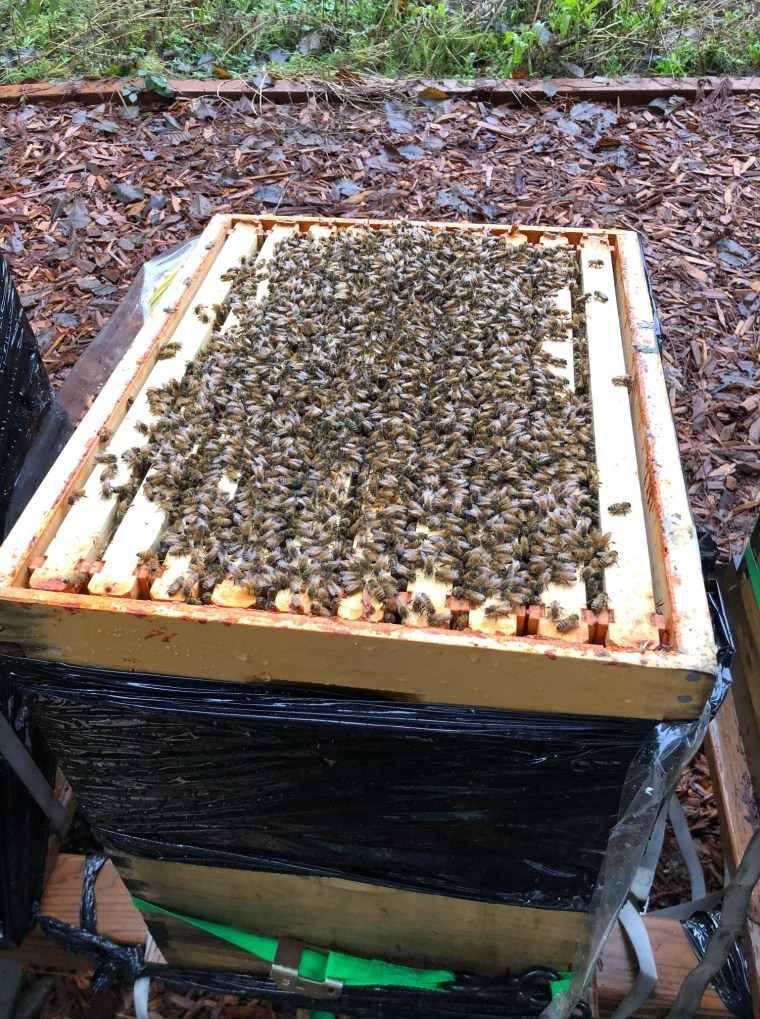
Have you ever thought about keeping bees in your backyard? Would the bees and their pollination help with your garden and fruit trees?
Beekeeping is a fun and very rewarding hobby and I am not talking about the sweet reward we call honey. Honey is an additional bonus when keeping bees, but it is not the main reward.
Just like any other fun hobby, beekeeping can be expensive. Most experienced beekeepers will recommend that you start beekeeping with two hives, which I agree with. You will learn twice as much and you will be able to spot problems much sooner if one of the colonies does not perform right. However, starting with two hives also doubles the startup cost.
Usually bees are not free, unless you can catch a swarm, which is very unlikely if you have no experience.
In addition to purchasing bees you will also need the proper equipment. Just to get the basics for 2 hives you are most likely going to spend between $800.00 to $1,000.00.
If the answer to my first question is yes and you have not taken the plunge, it might have a couple of reasons:
- You are not quite sure if you will really enjoy beekeeping
- It is cost prohibitive
- You are worried about getting stung
- You are not sure if you know enough about beekeeping
- You do not have enough time to manage the hives
I am sure there are many other reasons why someone might not take the plunge and start keeping bees. Honestly, I was one of you, I had many of those reasons as well, but eventually decided to make the investment and I ordered my first two packages of bees.
I have a busy office job which requires me to put in 50-60 hours every week and the bees are a perfect balance. No computer and no internet required when I work with the bees. Unless I am typing up a blog about beekeeping while sitting in an airplane on my way to the next conference.
You have probably heard about or even seen a bee swarm. Swarming is a natural behavior of bees to grow and multiply. A queen bee can lay up to 2,000 eggs a day during peak season, which means your hive will grow very fast in bee volume. A regular hive has about 40,000 – 60,000 bees. Once the hive gets too crowded, the bees start raising a new queen and the old queen takes off with about 50% of the bees. They will find a new home in a tree cavity or any other space the bees find appropriate.
Beekeepers like to control swarming and a lot of times this is done by manually splitting the hive before the bees decide to split themselves. By splitting the hive manually, the beekeeper does not lose 50% of their bees and the honey yield will be bigger.
My bee yard has grown from 2 colonies to 8 colonies within 2-years and now going into the third year, I will have to split several hives again, I am looking at a total of 12-15 hives in 2018. This will be more than I can manage and therefore I have decided to sell a few Nuc colonies.
If you are interested in a 5 frame Nuc please send me an email at sales@sevenlakesapiary.com.
In addition to the Nucs, I am also offering a rental and mentor program to a few beekeepers. If you are not quite sure if beekeeping is for you, but you would like to give it a try for the season, I will rent you one of my hives for the 2018 season and also provide support for your beekeeping endeavor. This will be a smaller investment than the $800.00 – $1,000.00 I mentioned above.
At the end of the 2018 season you will have a couple of options:
- Return the hive and keep all the surplus honey (if there is any)
- Purchase the equipment and make the hive your own (bees will be free)
If all goes well over the next few weeks, my Nucs will be available in mid to late April.
Please drop me a line if you are interested in becoming a beekeeper.
Michael
P.S.: If you start keeping bees you will get stung!












